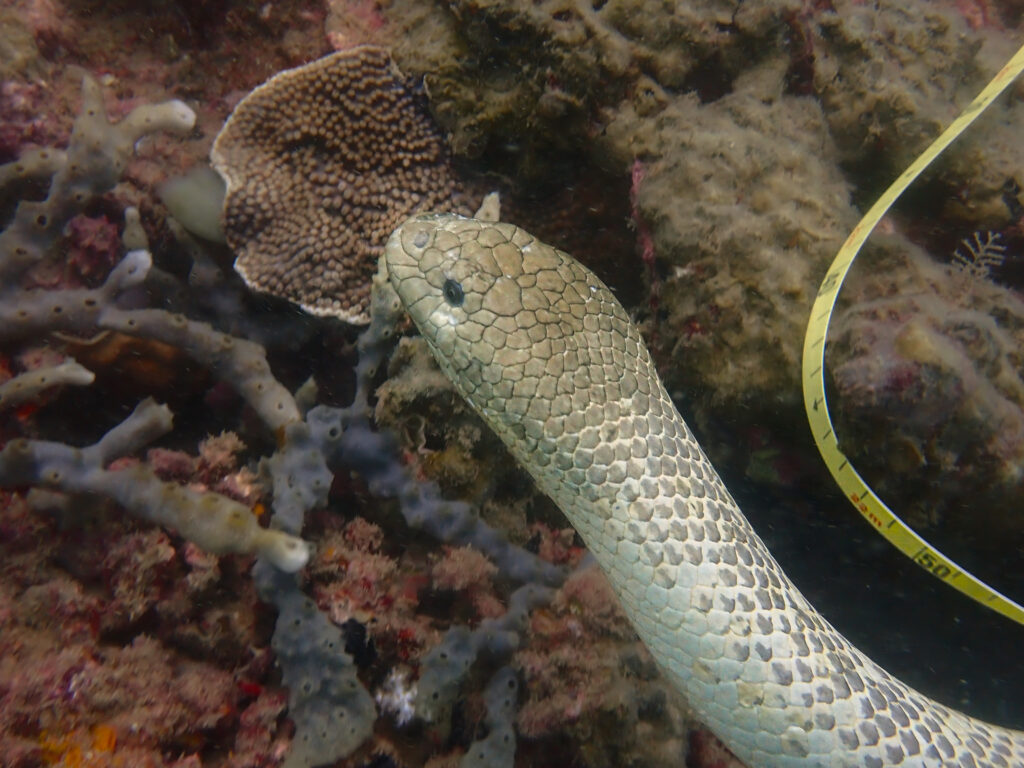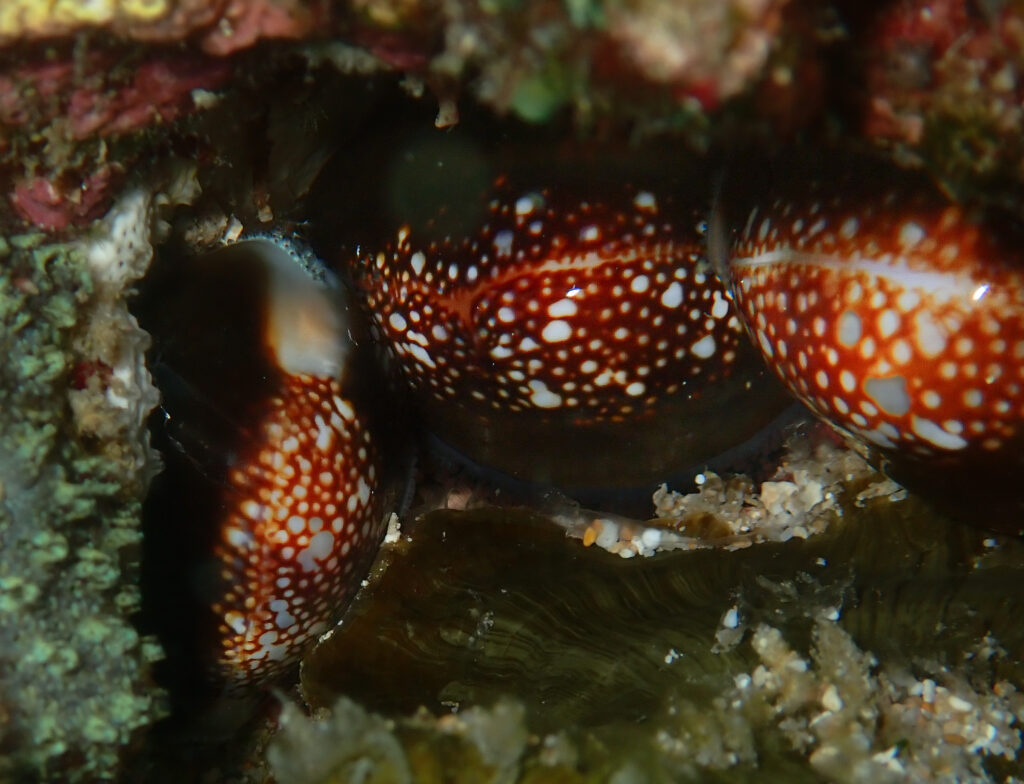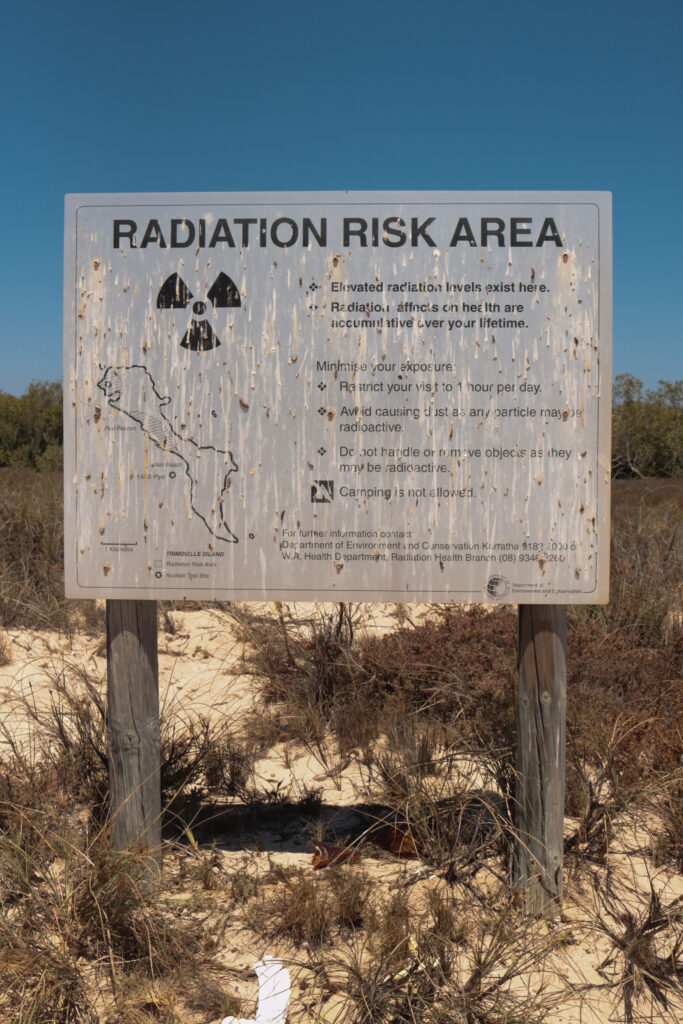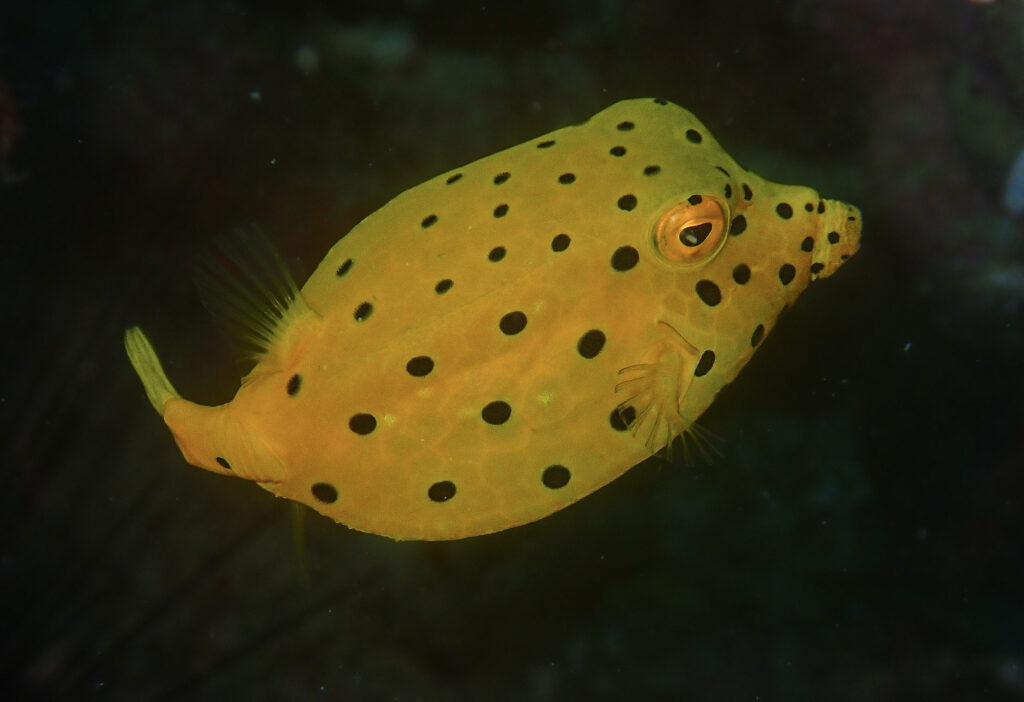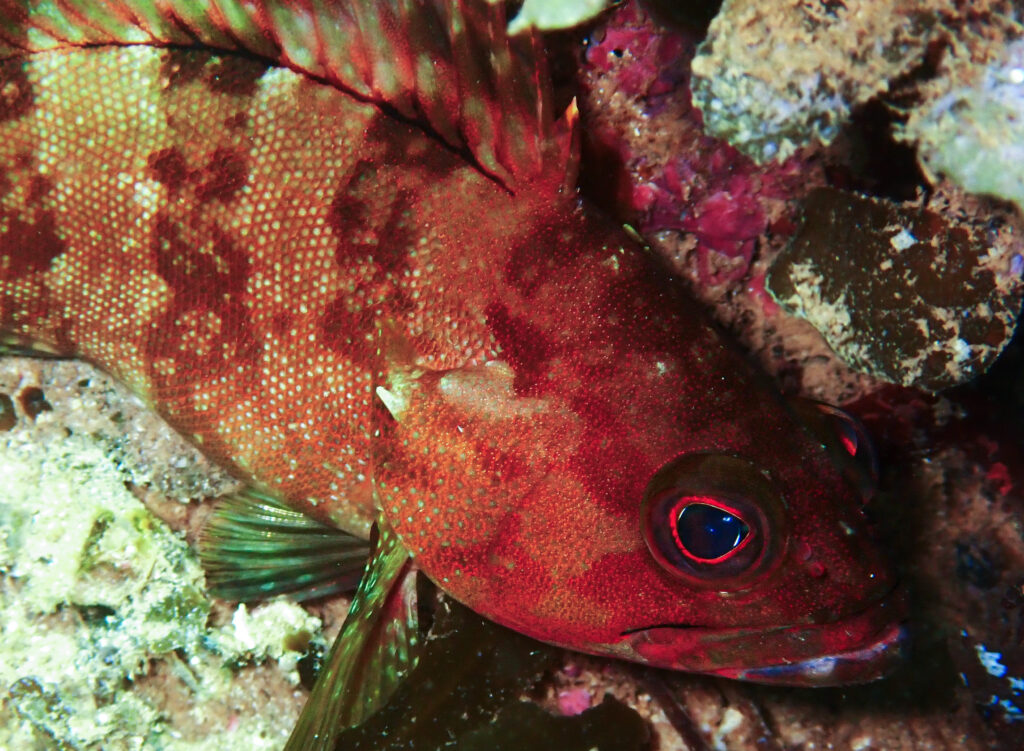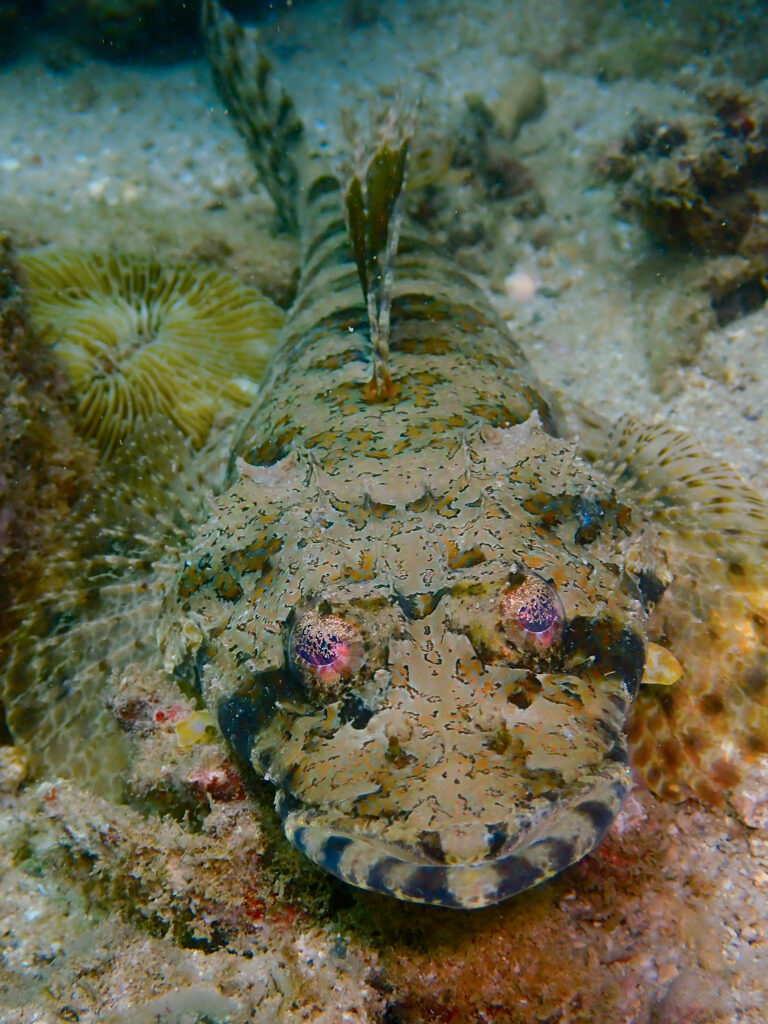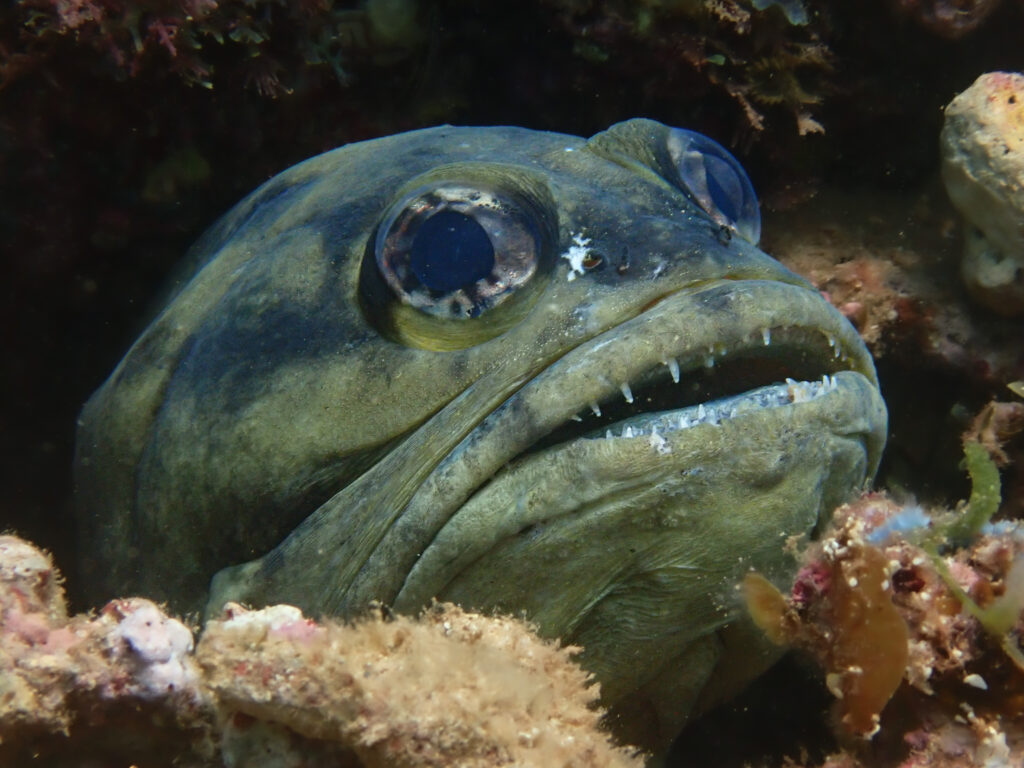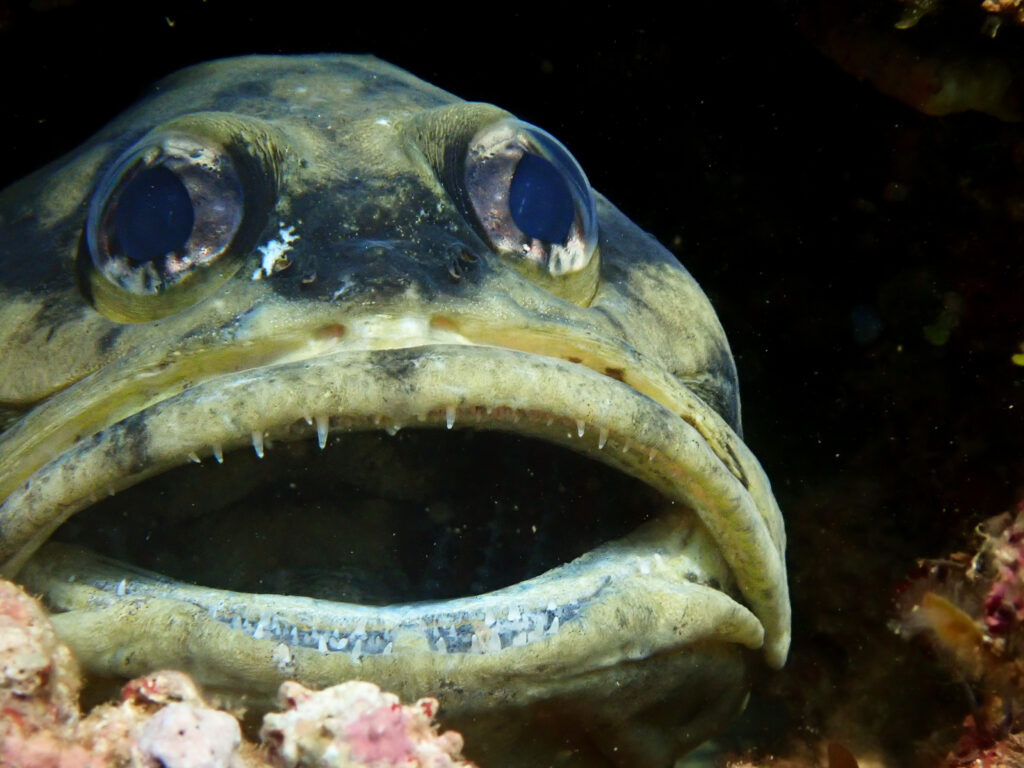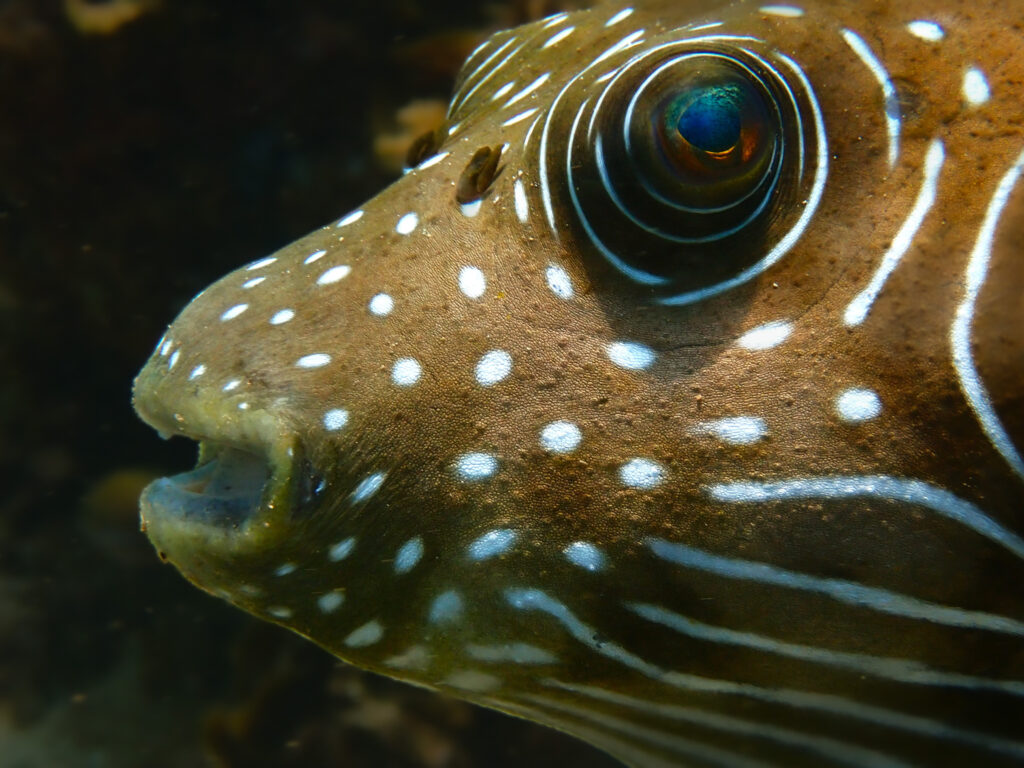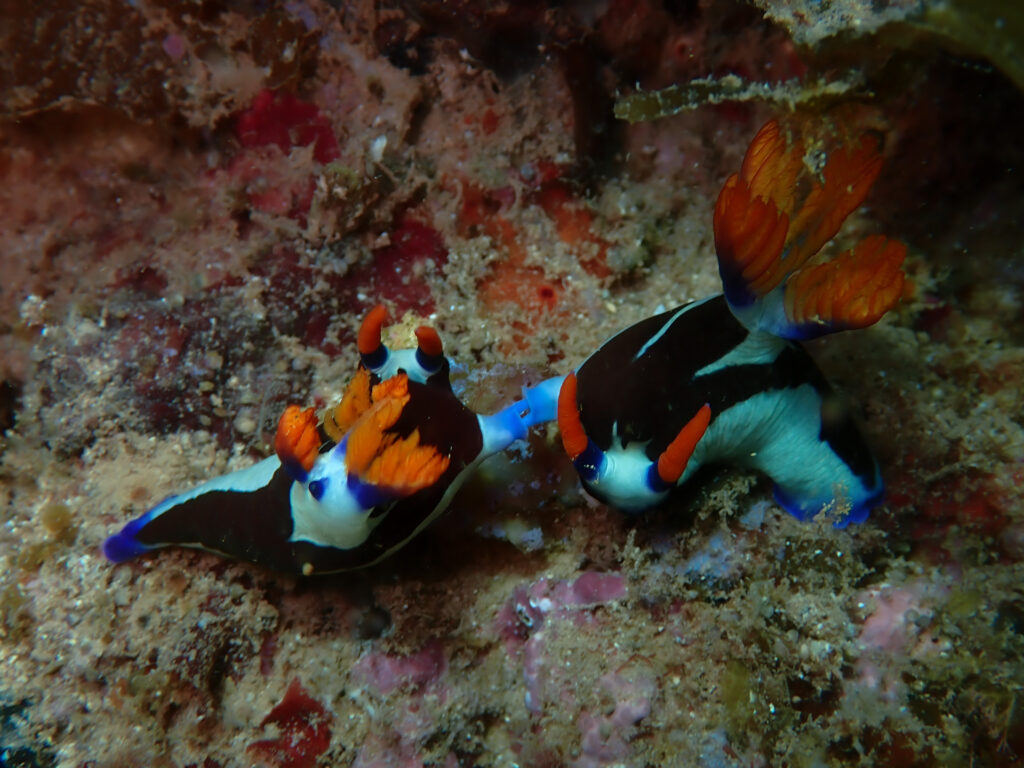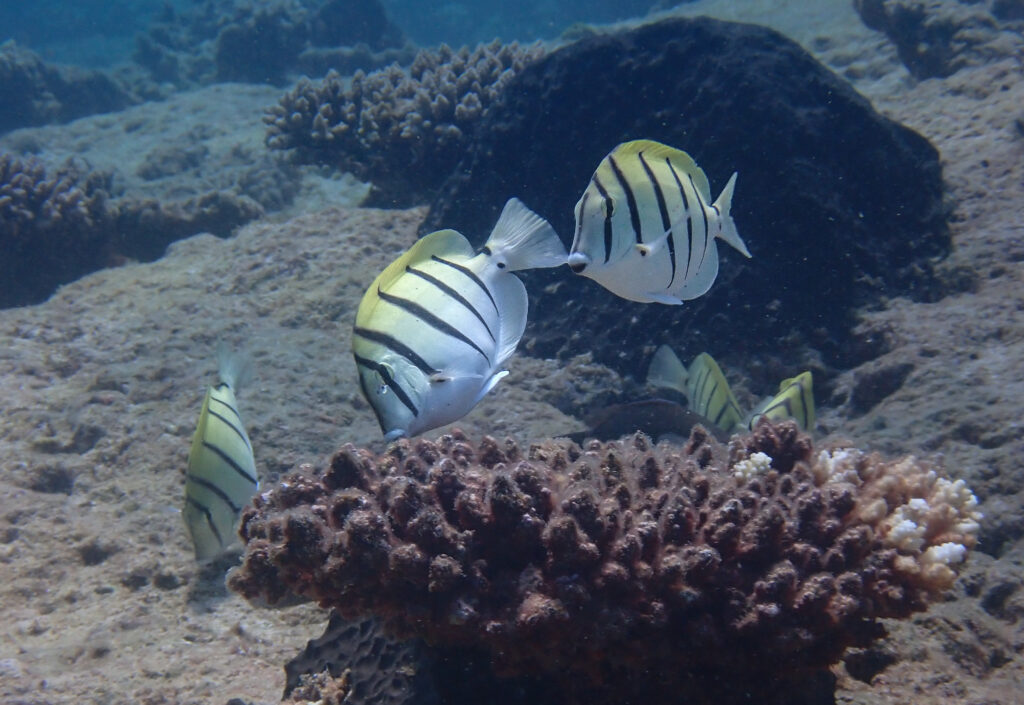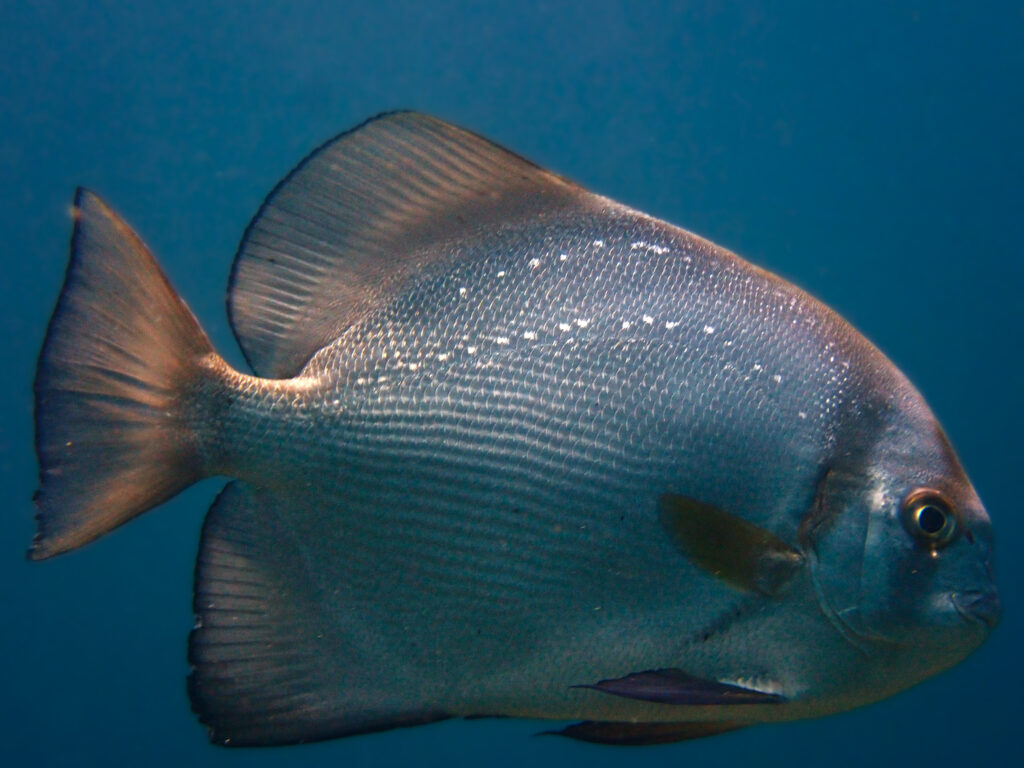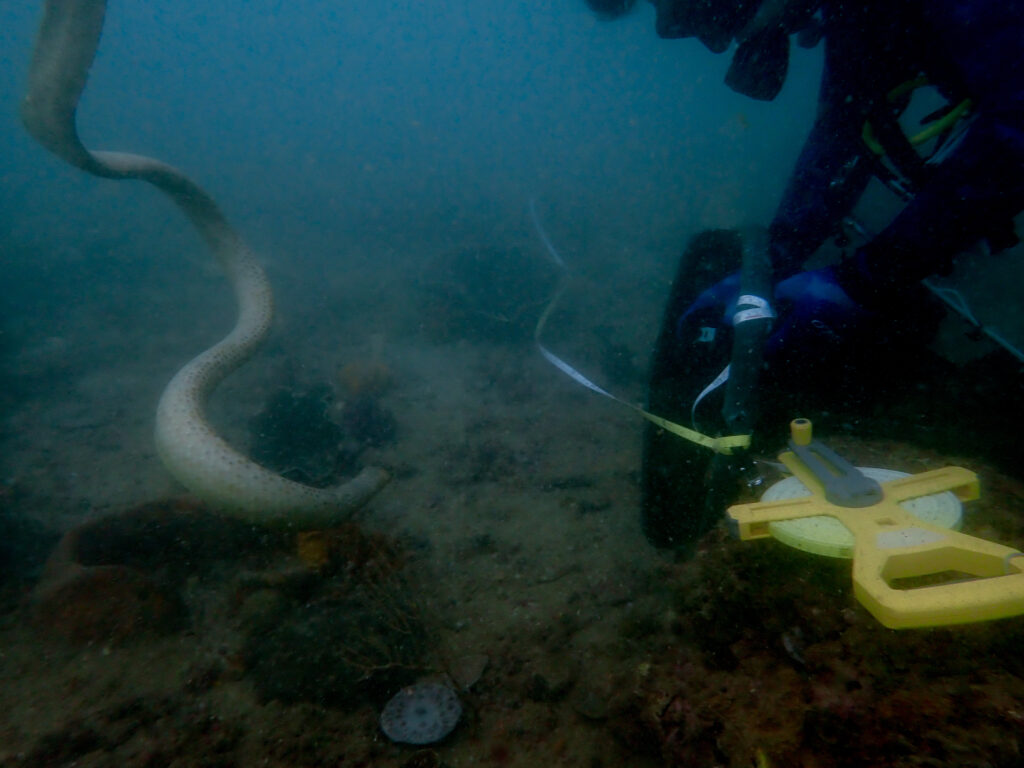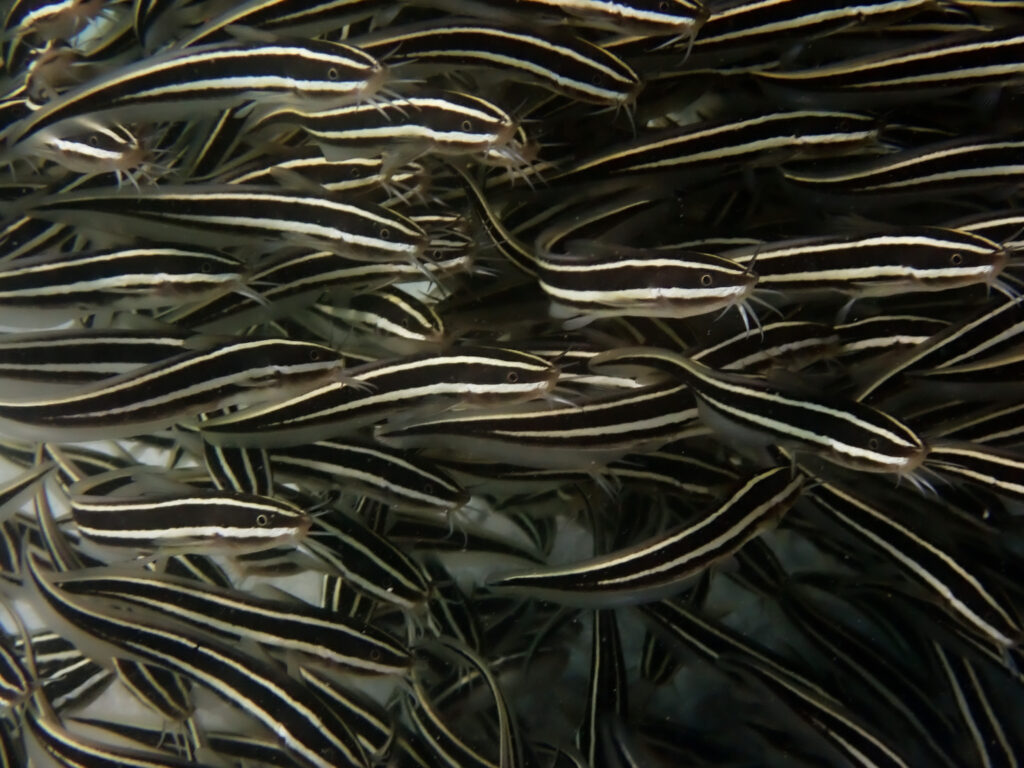After a huge couple of days restocking Melita via tender, long-term Melita residents Graham and Kirsty were joined in Port Hedland by some fresh faces: PhD Student Yann, travelled all the way from Tasmania, and Skipper John Lambert. All aboard were looking forward to deep red rocks, teal blue waters, and islands upon islands as they conducted RLS surveys along the north-western coast of Australia!
Marapikurrinya/ Port Hedland
The first dives of the trip were just outside the leads of Marapikurrinya. The water was warm, the visibility was about 5 metres, and there was a decent current. Coral cover was limited and there was fine sediment settled over the substrate. The first of two sites was dominated by scattered sponges, and the second by red Asparagopsis seaweeds, with various species of coral trout common across both. I counted 9 large bar-cheeked coral trout (Plectropomus maculatus) on transect, and many more off transect. The blue-spotted cod (Cephalopholis cyanostigma) and chocolate cod (Cephalopholis boenak) were also 'spotted' on and off transect (pun intended). The same was true of tuskfish (Choerodon spp.), with a total of 5 species recorded at each location! Eight blackspot tuskfish (C. schoenleinii) were counted on transect at site one, and 10 at site two! The white spot tuskfish (C. cyanodus), blue-spotted tuskfish (C. cauteroma), purple tuskfish (C. cephalotes) and black-stripe tuskfish (C. vitta) all made an appearance- so you could say there was a real stampede of them that day! We also saw a couple of huge, girthy and curious Arafura sea snakes (Aipysurus tenuis) measuring about 1.2m. One inquisitive individual even slithered around Yann's legs.
Dampier Islands
We sailed south to survey two sites just outside of Murujuga/ Dampier in good conditions, watching humpback whales surface, and dolphins play along the way. Murujuga is located in the Pilbara region of WA, and consists of a narrow peninsula as well as 42 offshore islands. The fringing reef sites had predominately silty substrates, with a few scattered colonies of Porites boulder corals, some soft corals, and a lot of rocks. Schools of 100-strong Spanish flag snapper (Lutjanus carponotatus) and five-line snapper (L. quinquelineatus) danced around the transect line, along with yellowtail fusilier (Caesio cuning) and black-tipped fusilier (Pterocaesio digramma).
One of my favourite finds on these island dives was a 70cm crocodile-fish (Cymbacephalus beauforti) at West Lewis Island. It was my first time seeing one up close, and it was stunning, with golden leafing around its eyes fit for a Greek god or goddess! I spent a good deal of time trying to get a photo, and you can see it pictured below!
With our surveys complete, sailing back into the town of Dampier was just beautiful. It was all red rocks and soil, with eucalyptus trees and Australian scrub scattered throughout the landscape, with blue waters and big, endless skies. It was time to drop off Gedgar for a well needed and deserved break, and for John to take over as skipper. We had a day to organise our fresh food shop and get the boat ready for the Montebellos. Upon returning to Melita after a shop, Yann and I received some bad news. John had hurt his back and had to leave – it was a big bummer, but we wanted him to get well. This meant Yann and I were stuck in Dampier for 5 days until Gedgar's almighty return. Thankfully a friend of mine leant Yann and I his van to explore which saved us from going crazy- thanks Jamie! We visited a beautiful river, Indigenous rock carvings, little towns, and the yacht club to watch beautiful sunsets over the bay.
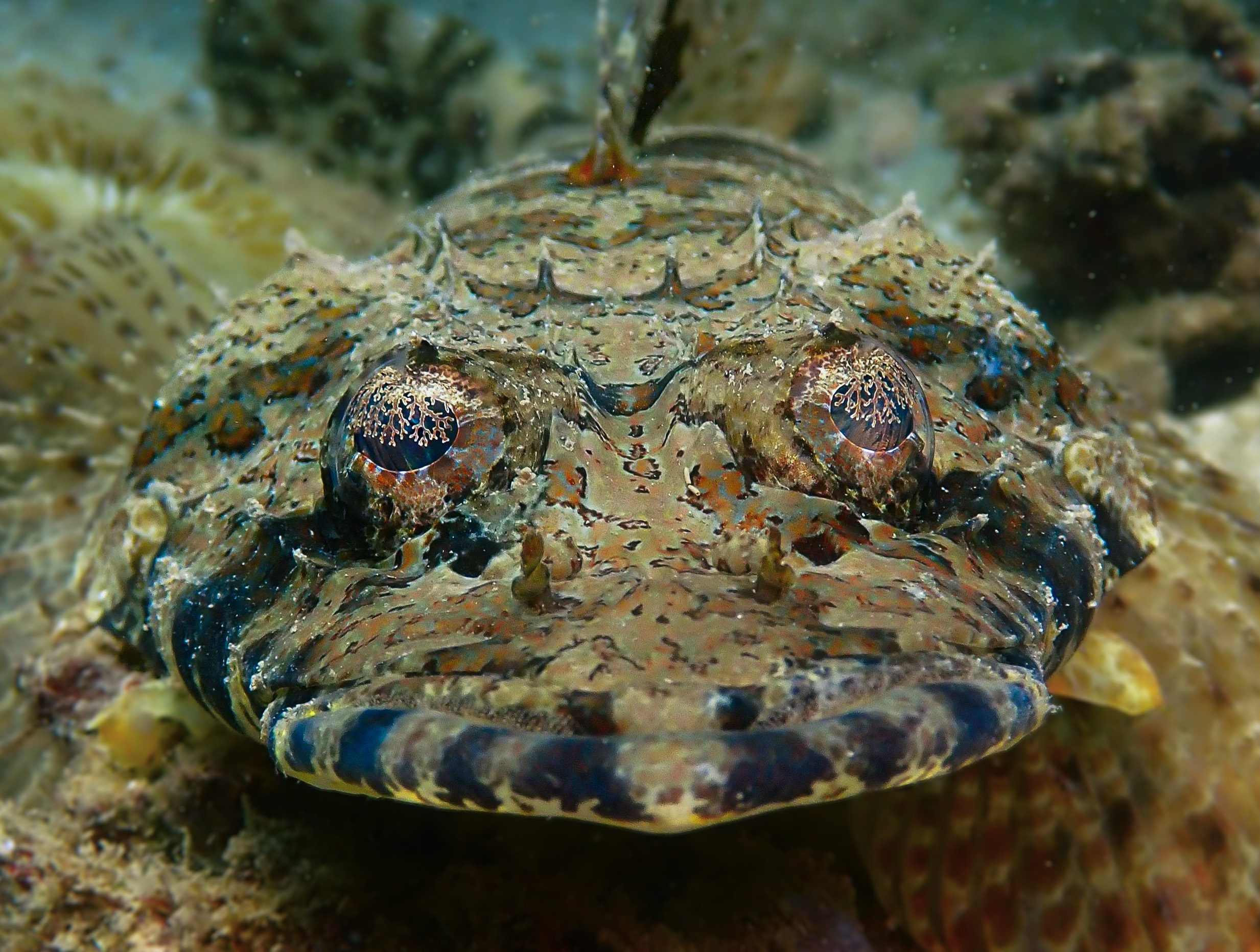
Montebello Islands
The Montebello Island archipelago is comprised of 174 islands, 92 of which are named. The topside scenery was striking, with a mix of exposed rock and shrubs and secluded white sandy bays. The diving was very variable, from lagoon dives featuring seaweed flats, limited topography and a limited diversity, to structured reefs, outer reef and coral gardens with high diversity.
One of my highlight dives (probably of the entire trip) was at West Reef. The reef transitioned from coral gardens with sandy patches into large reef structures with overhangs and swim throughs. It took me a while to survey, because it was just so bloody beautiful and I wanted to watch all the creatures go about their day! It was so diverse, with hundreds of fish and cool inverts and cryptic species everywhere you looked. On my transect I recorded 85 species of fish and 48 species of invertebrates and cryptic fish. Some species were out in numbers, like the 370 silver bullseyes (Pempheris schwenkii) I recorded on my transect.
It wouldn't be a true Melita leg without a dubious shark encounter would it? This time, the perpetrator was a sickle-fin lemon shark (Negaprion acutidens). I was just finishing M1 and finalising my numbers when a school of 20 big milkfish (Chanos chanos), about 1m in length, swam past me. I attempted to get a photo with no luck, so instead I sat back and observed. When I turned around there was the 2.5m shark right behind me. I yelled in shock, not expecting to see this big creature merely 80cm from me!! My commotion startled the poor shark and everything went into slow motion! The shark looked just as surprised as I was, with its pectoral fins flayed out and eyes open wide, just about backflipping away from me. It was very comical and I lost the plot laughing, my mask leaking, heaps of bubbles everywhere… this time I continued on with my transect.
We visited many sites and bays at the Monties, and were lucky to spot huge groups of mating turtles. In one particular bay, lots of splashing was going on close to shore, with what looked like scattered rocks everywhere. Out came the binoculars, revealing hundreds of female turtles trying to escape males as they attempted to procreate with them. It was quite spectacular. One female came very close to Melita and had several males trying for her affections (pictured below). At most of our overnight anchorages, we could watch turtles mating and hear them coming up for air. And as if that wasn't spectacular enough, we also saw dugongs! A mumma dugong and her calf rested in a bay, coming to the surface for breath. It was closing in on sunset when we witnessed this, making for a magical display as the dugongs swam around the sunset-painted waters.
While the Montebellos are beautiful, in the 1950s’ the British Army conducted three atmospheric nuclear weapons tests on some of the islands. This means that today you can be on land for a maximum of about an hour or two due to residual radiation risk. Yann and I tendered over to one of them, watching more turtles as we drove by and went for a wander.
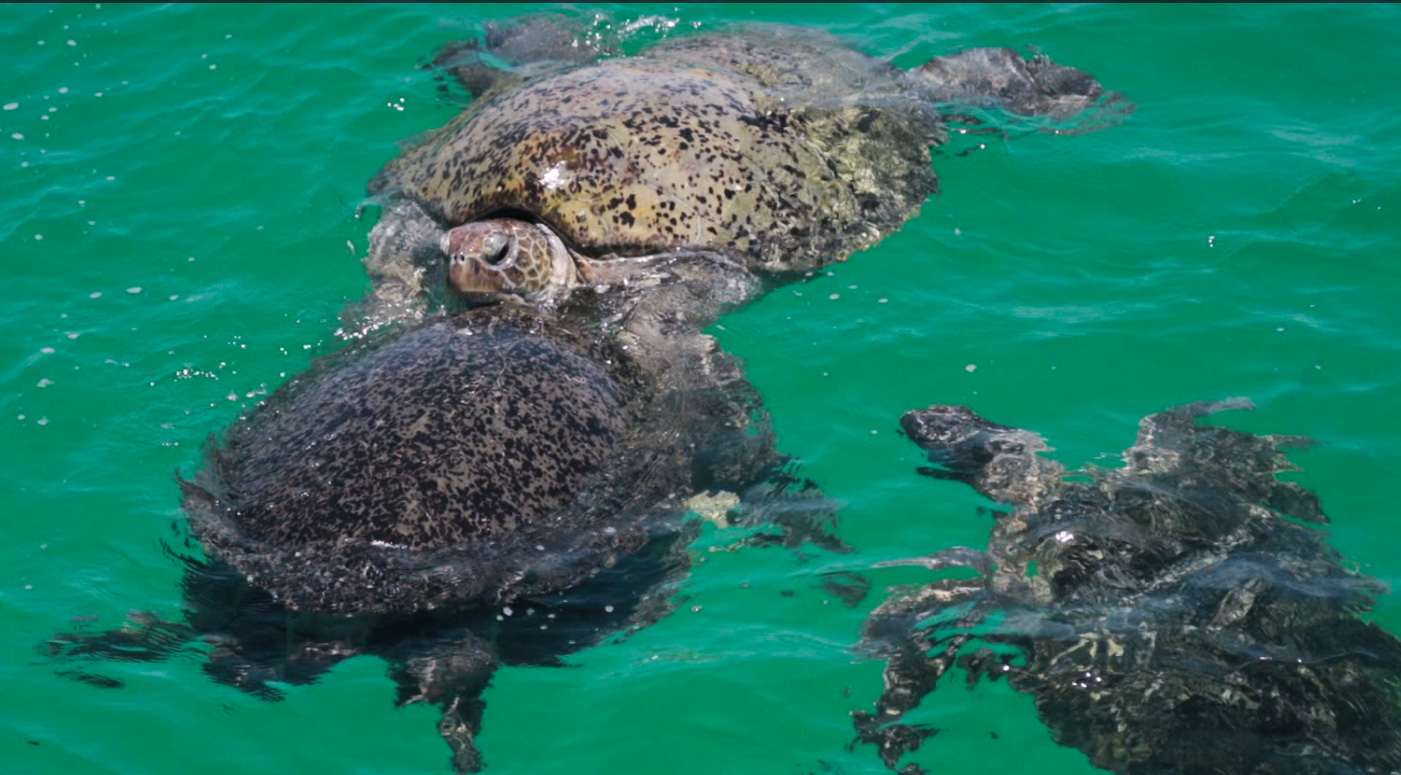
Outer Montebello Reef
The outer reefs of the Montebellos were also fantastic dives, with high visibility and more coral cover overall. There was a fair amount of exposed coral rock, but a lot of cool fish and plenty of sharks. On one of these dives, I spotted a tiger shark (Galeocerdo cuvier), three big grey reef sharks (Carcharhinus amblyrhynchos), and a white tip reef shark (Triaenodon obesus).
I also got to see a few of my favourite fish; the juvenile yellow box fish (Ostracion cubicus). There were some larger ones swimming around off transect too, but they lose their cuteness in adulthood and start looking like old men with big noses (nevertheless, still awesome to spot)! Another cool cryptic fish seen was the red spotted rock-skipper (Blenniella chrysospilos). They were very quick and shy and hard to photograph, but relatively abundant, with four recorded on both M1 and M2 on one dive.
Other Islands
Airlie Island south of the Montebellos and Barrow Island was a hotspot for interesting marine critters among the seaweeds and rocky reefs. A curious stars and stripes pufferfish (Arothron hispidus) joined me during my survey; I'd wiggle my fingers under the sand, and this cutie would come up and stare before continuing to follow me along the transect. I saw my first ever nudibranch procreation between two purple-lined polycerids (Nembrotha purpureolineata), with one little other nudi watching – which is something I have always wanted to see (not the 3rd nudi watching on necessarily, but the mating nudis in general)! I got some great photos of this, but I did feel a little bit rude gazing on. There was also an absolutely enormous and alien-looking blotched jawfish (Opistognathus latitabundus), which has not previously been recorded on an RLS transect!
This leg was one of the most variable in terms of diving and marine life, with a mixture of coral and seaweed reefs, complex and silty substrates. We had three weeks to cover around 350nm, so there was less overnight sailing and more time to relax in the evenings. There were so many highlights on this leg that it's hard to fit them all into a couple of pages!! A huge thank you to Graham who made this trip possible, even giving up his time off to return early and get us sailing after John's injury. Without this, our data collection would have been delayed by a month. In total, we surveyed over 30 sites, both newly established and existing RLS sites. We saw dolphins, humpback whales, dugongs, mating turtles in huge numbers, islands upon islands, sunrises and sunsets upon sunrises and sunsets. All in all, it was an epic leg.
